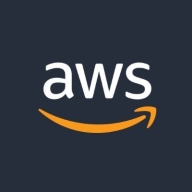

AWS X-Ray and AWS Auto Scaling are two distinct services in the AWS ecosystem. Based on user reviews, AWS Auto Scaling appears to have the upper hand due to its robust feature set, though AWS X-Ray is favored for its simplicity.
Features: AWS X-Ray offers detailed tracing capabilities, service map visualization, and quick identification of performance bottlenecks. AWS Auto Scaling provides automatic resource scaling, ensures optimal performance, and reduces costs, making it superior in automation and efficiency.
Room for Improvement: AWS X-Ray could improve by enhancing its integration with more AWS services, supporting larger environments, and providing better flexibility. AWS Auto Scaling needs more intuitive setup options, granular control over scaling policies, and usability enhancements.
Ease of Deployment and Customer Service: AWS X-Ray is noted for simple deployment and responsive customer service, with easy integration into existing systems. AWS Auto Scaling also has good deployment reviews, though initial configuration can be tricky. Both have good customer service, but AWS Auto Scaling's steeper learning curve poses a challenge.
Pricing and ROI: AWS X-Ray is cost-effective and offers a good return on investment through improved visibility. AWS Auto Scaling, while more expensive, saves costs by optimizing resource usage and offers a higher long-term ROI.


AWS Auto Scaling monitors your applications and automatically adjusts capacity to maintain steady, predictable performance at the lowest possible cost. Using AWS Auto Scaling, it’s easy to setup application scaling for multiple resources across multiple services in minutes. The service provides a simple, powerful user interface that lets you build scaling plans for resources including Amazon EC2 instances and Spot Fleets, Amazon ECS tasks, Amazon DynamoDB tables and indexes, and Amazon Aurora Replicas. AWS Auto Scaling makes scaling simple with recommendations that allow you to optimize performance, costs, or balance between them. If you’re already using Amazon EC2 Auto Scaling to dynamically scale your Amazon EC2 instances, you can now combine it with AWS Auto Scaling to scale additional resources for other AWS services. With AWS Auto Scaling, your applications always have the right resources at the right time.
AWS X-Ray is a powerful debugging and performance analysis tool offered by Amazon Web Services. It allows developers to trace requests made to their applications and identify bottlenecks and issues.
With X-Ray, developers can visualize the entire request flow and pinpoint the exact location where errors occur. It provides detailed insights into the performance of individual components and helps optimize the overall application performance.
X-Ray integrates seamlessly with other AWS services, making it easy to trace requests across different services and identify dependencies. It also offers a comprehensive set of APIs and SDKs, enabling developers to instrument their applications and capture valuable data for analysis. With its user-friendly interface and powerful features, AWS X-Ray is a valuable tool for developers looking to improve the performance and reliability of their applications.
We monitor all Application Performance Monitoring (APM) and Observability reviews to prevent fraudulent reviews and keep review quality high. We do not post reviews by company employees or direct competitors. We validate each review for authenticity via cross-reference with LinkedIn, and personal follow-up with the reviewer when necessary.